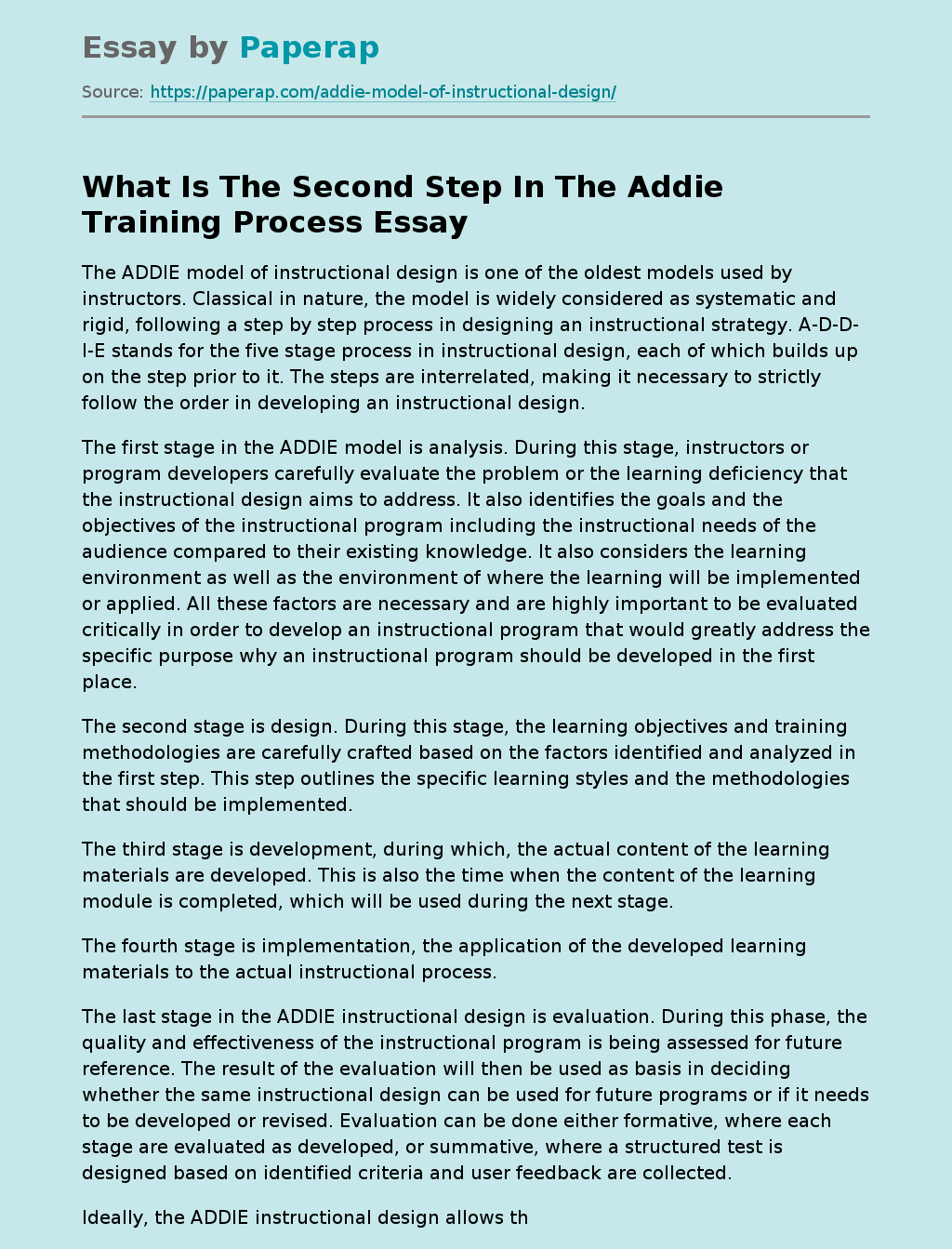What Is The Second Step In The Addie Training Process
The ADDIE model of instructional design is one of the oldest models used by instructors. Classical in nature, the model is widely considered as systematic and rigid, following a step by step process in designing an instructional strategy. A-D-D-I-E stands for the five stage process in instructional design, each of which builds up on the step prior to it. The steps are interrelated, making it necessary to strictly follow the order in developing an instructional design.
The first stage in the ADDIE model is analysis.
During this stage, instructors or program developers carefully evaluate the problem or the learning deficiency that the instructional design aims to address. It also identifies the goals and the objectives of the instructional program including the instructional needs of the audience compared to their existing knowledge. It also considers the learning environment as well as the environment of where the learning will be implemented or applied. All these factors are necessary and are highly important to be evaluated critically in order to develop an instructional program that would greatly address the specific purpose why an instructional program should be developed in the first place.
The second stage is design. During this stage, the learning objectives and training methodologies are carefully crafted based on the factors identified and analyzed in the first step. This step outlines the specific learning styles and the methodologies that should be implemented.
The third stage is development, during which, the actual content of the learning materials are developed. This is also the time when the content of the learning module is completed, which will be used during the next stage.
The fourth stage is implementation, the application of the developed learning materials to the actual instructional process.
The last stage in the ADDIE instructional design is evaluation. During this phase, the quality and effectiveness of the instructional program is being assessed for future reference. The result of the evaluation will then be used as basis in deciding whether the same instructional design can be used for future programs or if it needs to be developed or revised. Evaluation can be done either formative, where each stage are evaluated as developed, or summative, where a structured test is designed based on identified criteria and user feedback are collected.
Ideally, the ADDIE instructional design allows the development of a well-analyzed and well-planned instructional.
Reference:
- Dick, W., & Carey, L. (1996). The Systematic Design of Instruction (4th Ed.). New York: Haper Collins College Publishers.
What Is The Second Step In The Addie Training Process. (2019, Dec 05). Retrieved from https://paperap.com/addie-model-of-instructional-design/

